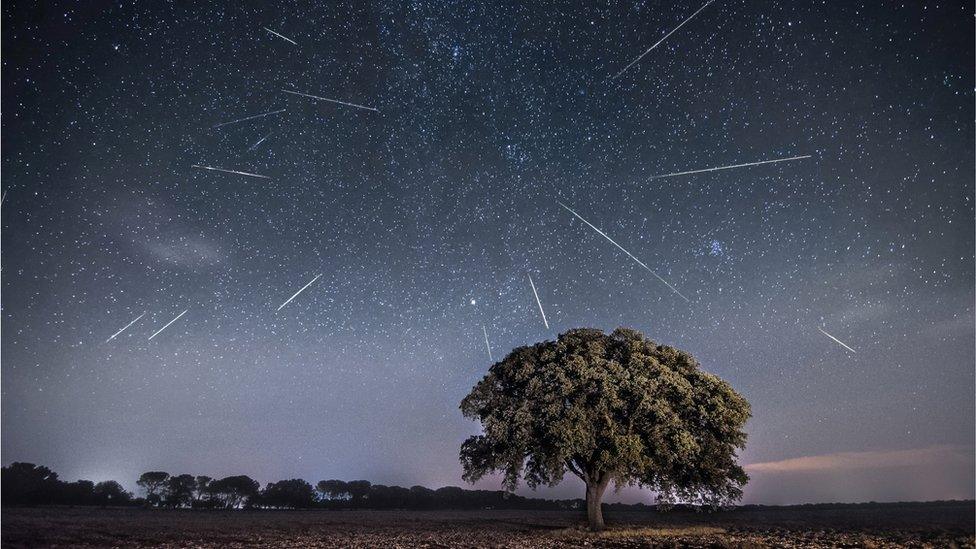Comet Nishimura: 'Once-in-a-lifetime' chance to see it
- Published
- comments
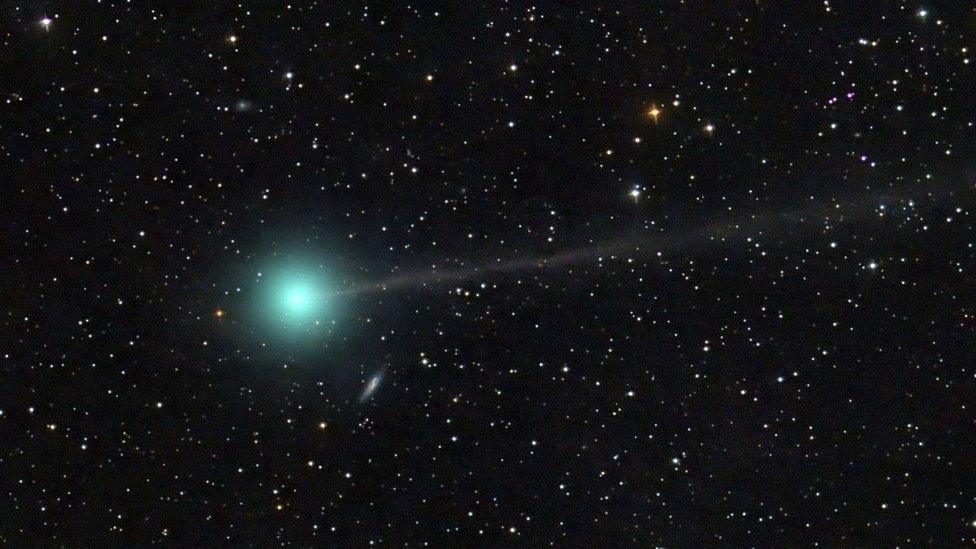
Comet Nishimura will be soaring past Earth soon
Stargazing fans, it's time to get to get excited because a "once-in-a-lifetime" opportunity to see a comet shooting through space is coming up.
Comet Nishimura - or or C/2023 P1 to use its official name - will be flying past the Earth at 240,000 miles per hour early on Tuesday 12 September.
The comet takes around 437 years to do one lap of our solar system - for reference it takes Earth one year.
"To say this is a once in a lifetime opportunity to see Nishimura isn't an exaggeration." said Professor Brad Gibson, the director of the astrophysics centre at the University of Hull.
Astronomers think the comet will be visible to the naked eye, so you won't need a telescope to be able to see it.

Hideo Nishimua discovered the comet using his trusty comet-hunting set-up.
The comet was only discovered a month ago by Japanese space photographer Hideo Nishimura.
He recorded it when he was taking long-exposure photographs of the sky with a digital camera on 11 August.
Comets are made of chunks of ice and dust, and as they pass by the Sun, the heat begins to melt the ice and dust - turning it from a solid to a gas - and creating a beautiful, bright tail trailing behind it.
Comet Nishimura C/2023 P1 was the third comet to be discovered by Hideo Nishimura!
He previously discovered Comet Nakamura-Nishimura-Machholz (C/1994 N1) and Comet Nishimura (C/2021 O1).
How can I see Comet Nishimura?
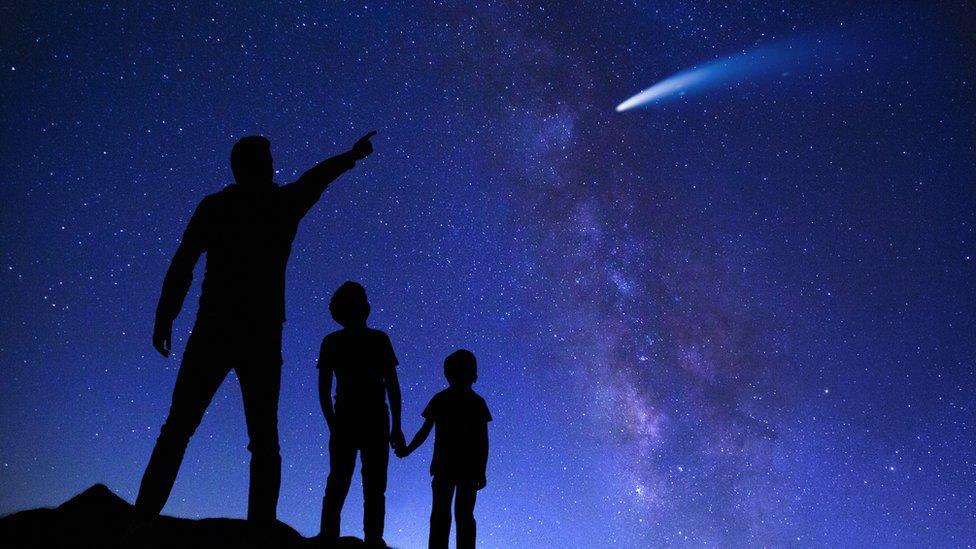
You'll be able to see Comet Nishimura without using a telescope!
Astronomers have said that the best time to see the comet pass by Earth will be just before dawn, around 4-6am on Tuesday 12 September.
It will appear in the north-east of the sky, near to Venus as it flies 78 million miles above us.
"On average, people have the chance to see such a naked eye comet once a decade - this is a rare and exciting opportunity." said Professor Brad Gibson.
Will it crash into Earth?

Professor Brad Gibson says we don't need to worry about Comet Nishimura hitting Earth
Scientists are still trying to figure out how big the comet is, but Professor Gibson thinks it could range from a few hundred metres to a mile or two across.
However, professor Gibson said there is no danger of Comet Nishimura hitting Earth, as astronomers have carefully mapped out its orbit and speed of travel.
On its journey past Earth, the comet will pass so close to the Sun that astrophysicists think it might break up.
- Published13 February 2023
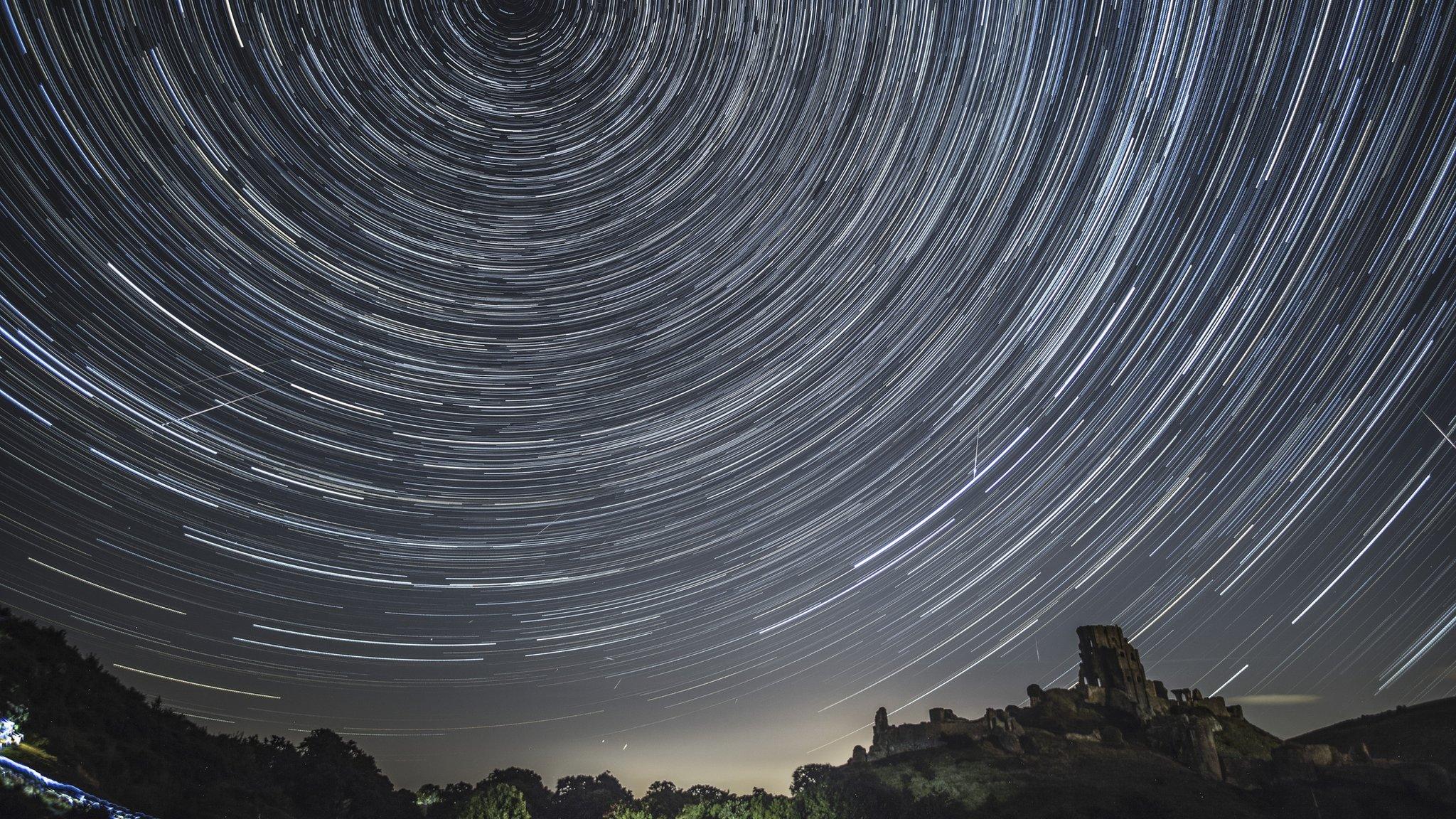
- Published4 October 2019
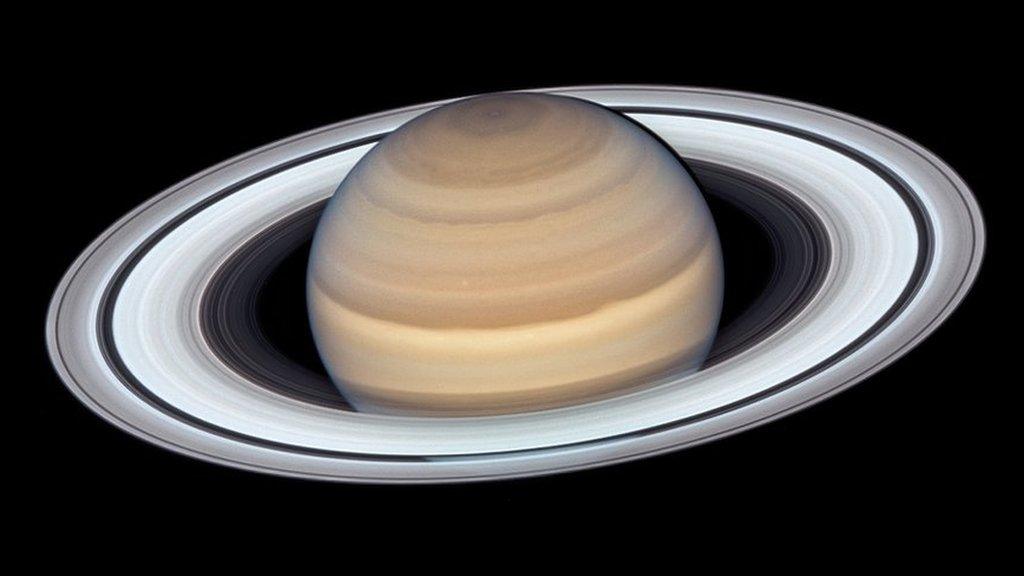
- Published9 August 2023
